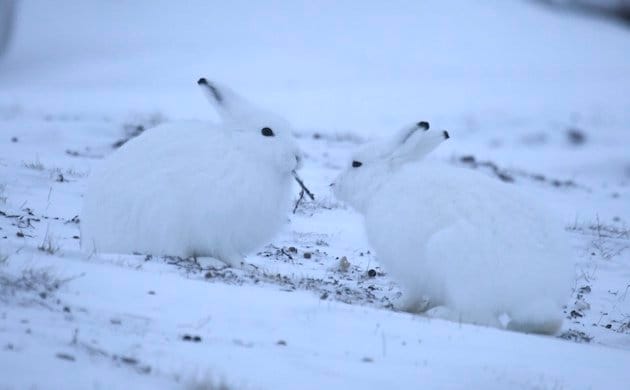
Gyrfalcons are big birds. A male Gyrfalcon, the smaller of the pair, can clock in at 24 inches tall and weigh up to 3 pounds. Females can get up to 4.5 pounds and a couple of inches taller. After spending most of my time watching them at an aerie some 150 feet up a cliff I never really appreciated just how big they are until I held an injured one in my hands.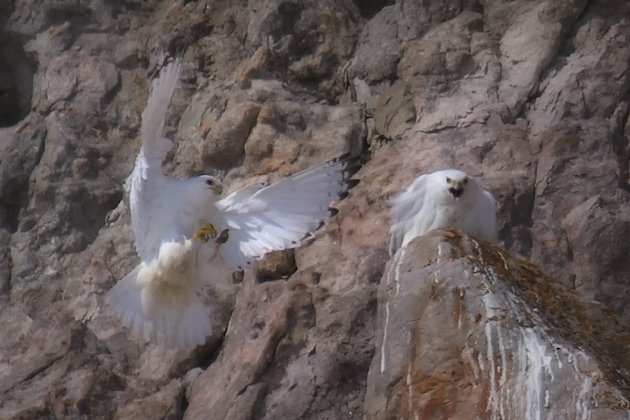
A Gyrfalcon pair nearly 150 feet up a cliff face near their long established aerie
Being big, they can take some pretty big prey. They’ll tackle Ravens (although some times Ravens will tackle them – like the aforementioned injured one), ptarmigan, Glaucous Gulls, and frequently Arctic Hare. Now Arctic Hare, a favoured prey item of Gyrfalcons, are no slouches in the size department themselves. Hares of twelve pounds are not uncommon. Peter Cottontails these are not.
A pair of Arctic Hare, the one on the right has its photo displayed on an aircraft tail fin up here
Last year was a pretty good year for the hare population, following the year after a huge lemming year and subsequent crash. Prey and predator populations wax and wane up here, following each other in a rather complex dance. While generally you can say they peak every four years it is really much more complicated than that. But when the lemmings have a great year, it takes a lot of pressure off other prey, such as Arctic Hare, allowing their population to grow. More prey means predators have an easier time so when the lemmings go, usually the hare crash the following year. I saw more Arctic Hare last year than I’ve seen in all my time here, which intuitively told me this year would be a lean year for them.
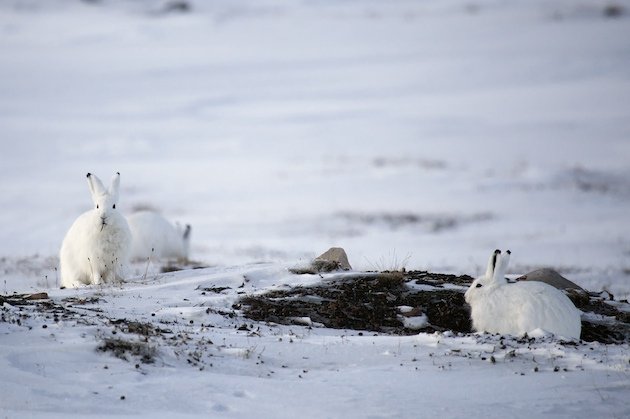 Three Arctic Hare feed in the spring sunlight
Three Arctic Hare feed in the spring sunlight
An Arctic Hare alert and ready to bolt away
Intuition has proven wrong however, as this year there are even more around. Last year in an area near town I’d commonly see six hare. This year we’ve seen over seventeen in the same area. Clearly the hare haven’t gotten the memo that they were supposed to crash. Which is a good thing as it’s providing excellent opportunities for photographing them. There are plenty around here, and once the weather begins to cooperate, and the daylight increase I’ll travel to an area where we saw a herd of over 125 last spring.
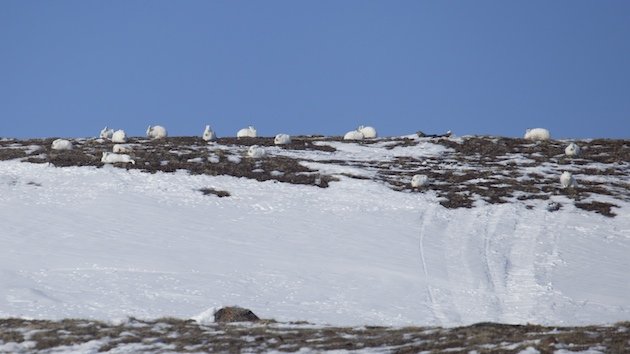 This is a small portion of a herd of Arctic Hare over 125 strong
This is a small portion of a herd of Arctic Hare over 125 strong
If they’ve followed suit, it should be an amazing concentration of animals. And a bounty for the many resident pairs of Gyrfalcons and Rough-legged Hawks that breed there.
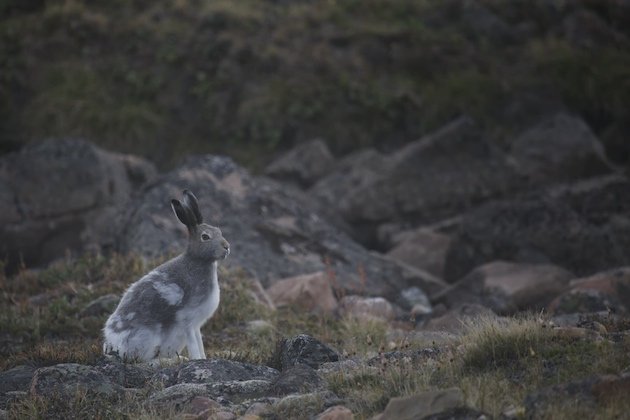
This hare, still changing to a summer coat despite it being late July, feeds unconcerned about 100 yards from a Rough-legged Hawk nest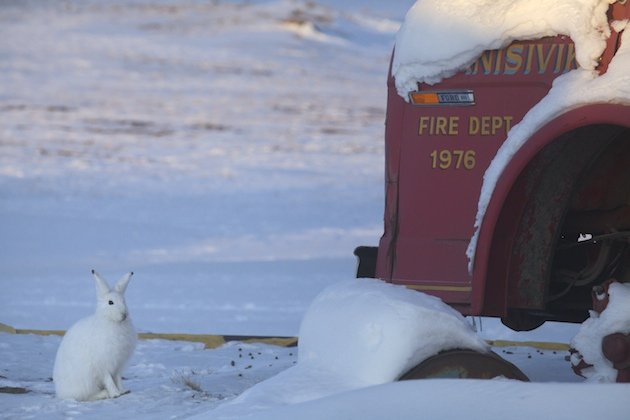
Some of our hare are urban dwellers, this one in the industrial section at the edge of town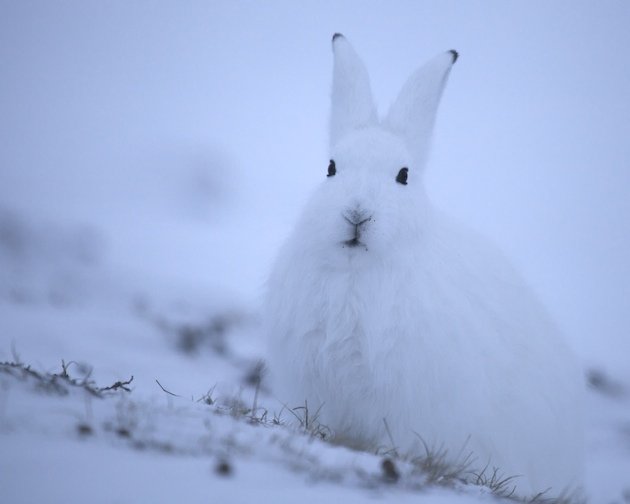
A hare photographed in poor light this last weekend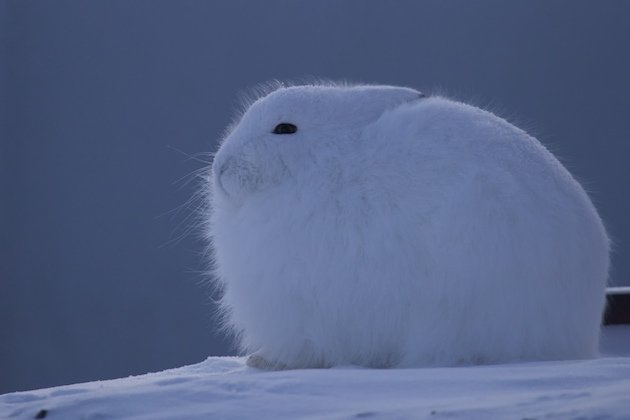
Hare spend a good deal of time resting to conserve heat in the winter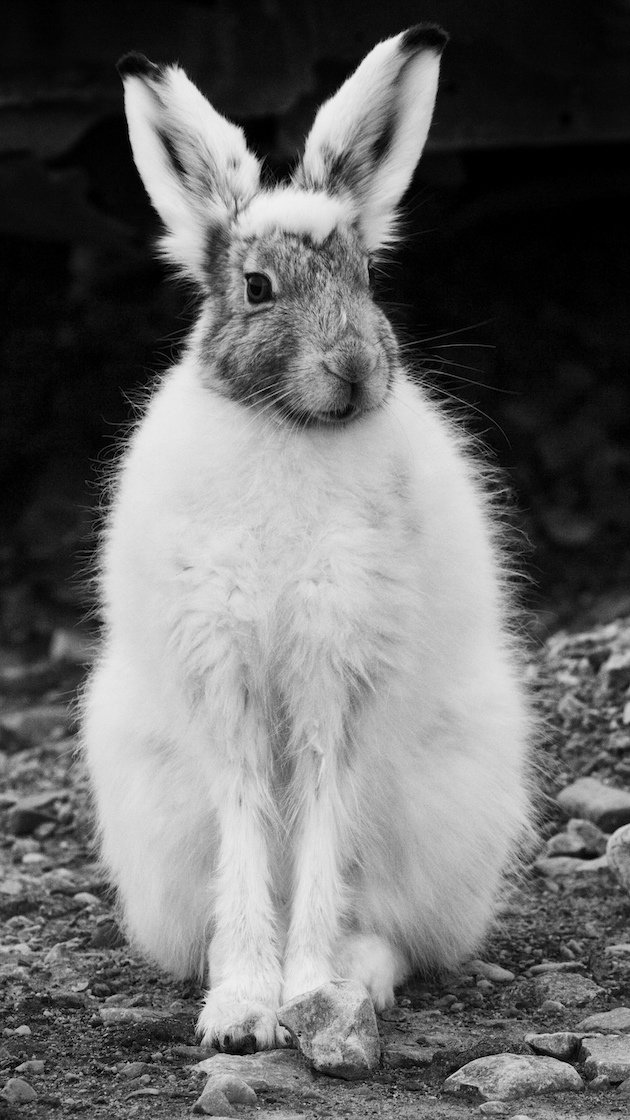
This hare is just starting to change to its summer grey coat
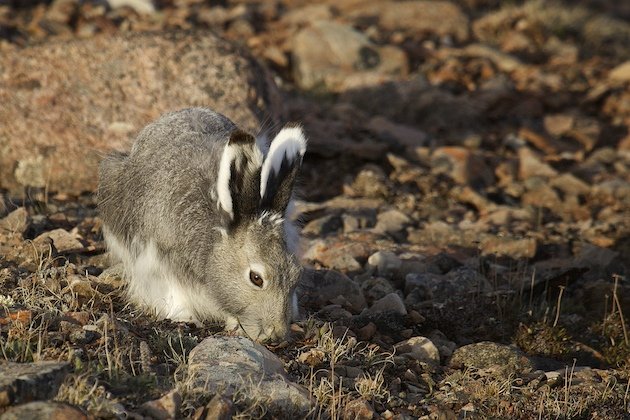
When it will look much like this one does

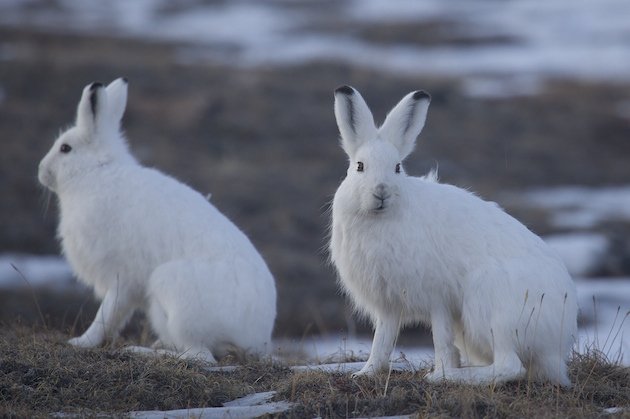
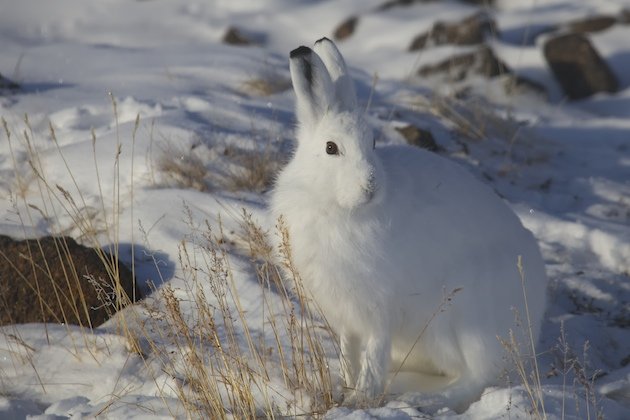










Fantastic shots, they tell the story as well as the words
Amazing transformation from “white” to “summer grey”. Looks like another good year for you and your fellow residents in the far north!
Soothing….
Want!! (although possibly not as much as the predators do!)
Clare- Great stuff as usual. We’ll be in touch about next year.
TRB
@Jason. Thank you. The few times I catch a story with my photos I consider I’ve done good.
@Clare. Thanks. Feels like a good year. Although I’d feel better if I wasn’t storm bound 1200 kms south of home. I want to try and see Pan-Starrs.
@Laura. Thanks. But they are wound pretty tight for me to think of them as soothing. Like little coiled springs.
@Meredith. A lot of people here will get a leveret and raise it.
@Timothy: Thanks. Looking forward to seeing you again.
And Justin (sorry I misspelled your name above). That shot of the Harrier in your last post on Raptors is stunning. One of the nicest raptor shots I’ve seen in a long well.